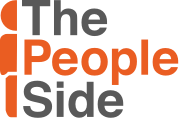Outpace the Cultural Conveyor Belt: 3 Ways to Actively Manage Your Bias
At The People Side, we've been exploring the impact of “Belonging” on human performance, and now we want the conversation to get personal. This topic forces us to consider our own implicit bias about who we are connecting to, and who we may be excluding, at work and the other environments we move in and out of every day.
Beverly Tatum, who wrote the book Why Are All the Black Kids Sitting Together in the Cafeteria? offers us a helpful way of thinking about bias. Imagine bias as a metaphorical conveyor belt, like the ones at the airport that move people from one terminal to the next. Imagine that the conveyor belt represents all of the influences around us – messages that shape and reinforce our biases about how different people are. Some individuals are walking quickly on the conveyor belt, allowing the momentum to sweep them up, and they reach their destination faster than everyone else. In this metaphor, they are the people who are actively biased and engage in exclusive stereotypes and active prejudice. You might hear “phobic” or “ist” language used to describe them.
Now think about the people who are passively standing on the conveyor belt. They are not active or purposeful, but the conveyor belt moves them forward just the same. In bias terms, these would be the individuals who are unconsciously biased or not actively addressing their bias. But their destination, without effort to counteract the momentum of the conveyor belt, will be the same as the first group’s.
So if someone is standing on the conveyor belt, what needs to happen to overcome the biases and influences around them? This person would need to actively turn around and move twice as fast in the opposite direction. Now imagine she has been actively walking in the opposite direction, but then she stops walking. Even if she is still facing the opposite direction, what happens to her momentum? As soon as she stops making an effort to move against the momentum, she will end up moving along the conveyor belt.
What does this metaphor tell us about the work that is involved in managing our bias?
It’s active.
It requires effort.
It isn’t a “one and done” event.
The journey is unique to each individual.
It can be uncomfortable
You may get tired.
Now, let’s think about you. How have you been swept up by the conveyor belt? In what ways have you already been actively and consciously moving in the opposite direction? We’re all on our own individual journey, and depending on our life experiences, wrestling with bias and moving against the conveyor belt may come harder or easier to each of us. For some of us, if we’re honest, we really haven’t been intentional about making this shift. But perhaps you are ready to start now. If you were to take intentional steps to counter the momentum of the conveyor belt, what might you try?
Here are 3 options to consider, 3 ways to actively manage your bias, 3 ways to move against the momentum of the conveyor belt we all inevitably find ourselves on.
1. Shift your biases from unconscious to conscious. We all have biases, and there’s no point in denying this reality. Instead, consider bringing your bias into the light, so that you can see it more clearly and make more conscious choices about how you allow it to influence you. One great way to see your own unconscious biases more clearly is by taking any of the Harvard Implicit Bias tests, which can be found at this link.
2. Seek out opportunities to see the world from others’ perspectives. This may mean asking thoughtful and curious questions of people who are different from you, and listening to learn. The “Who’s In Your Circle?” exercise may be a helpful place to start. You might also read a book such as Ta Nehisi Coates' memoir Between the World and Me, in which the author describes his experience of being a black man in America. Notice your internal reactions when hearing reality from another’s perspective. Get curious about what you feel and why.
3. Catch your bias in the act. Start paying attention to moments when your bias springs into action. Perhaps it’s a fleeting thought you have about someone you pass on the street, or a quick assumption you make about a given situation based on stereotypes and cultural messages you’ve received your entire life, or even something you do or say out of habit. Go a step further and tune in to your physical experience of bias – perhaps your pulse quickens or your muscles tense. Often, the body responds to being faced with difference even when the brain is not consciously aware of it. Finally, don’t beat yourself up in these moments. Be gentle with yourself. Notice that you’ve had a biased thought or feeling or action, and be willing to question it and notice its impact to you or someone else. What action does that make you want to take?
We believe that this conversation about bias and belonging is critical to human performance, and that it’s about practice over perfection. That is why The People Side introduced new conversation toolkits and experiences that challenge the conveyor belt called Team Talks. Get ready to have a great conversation!

